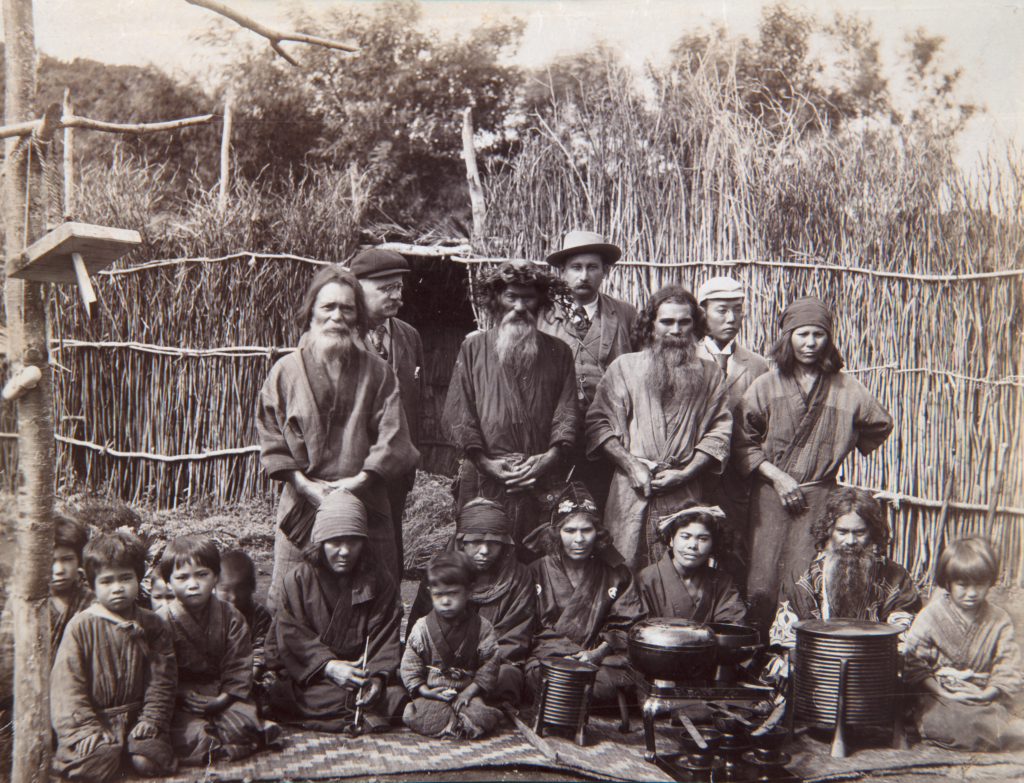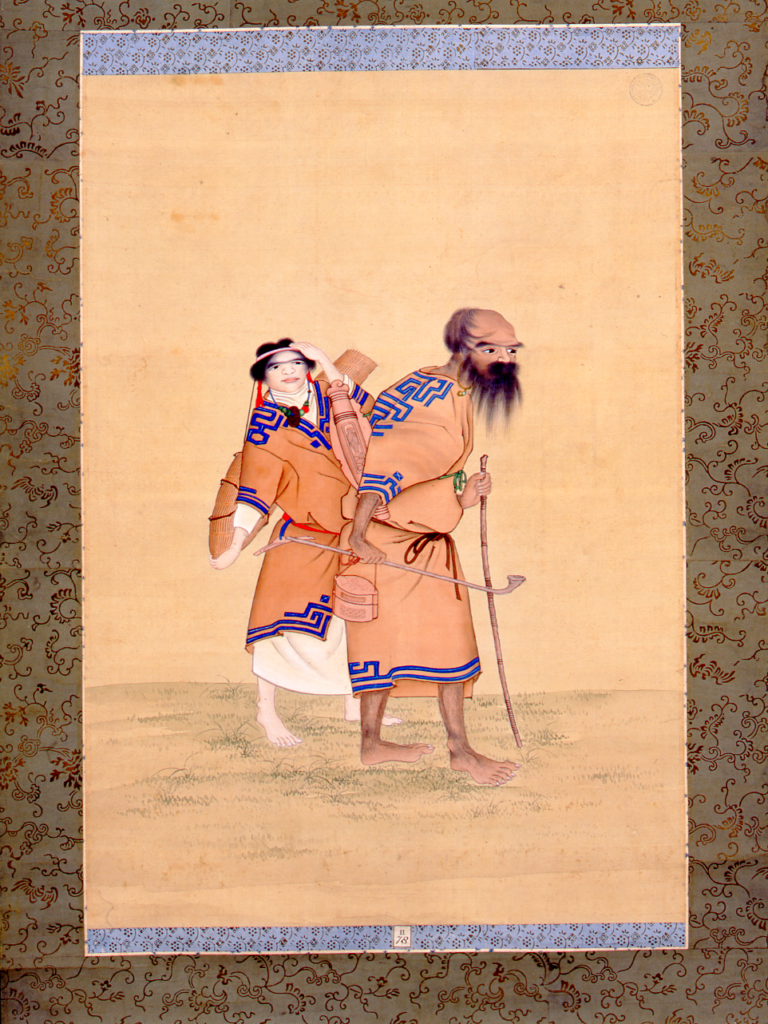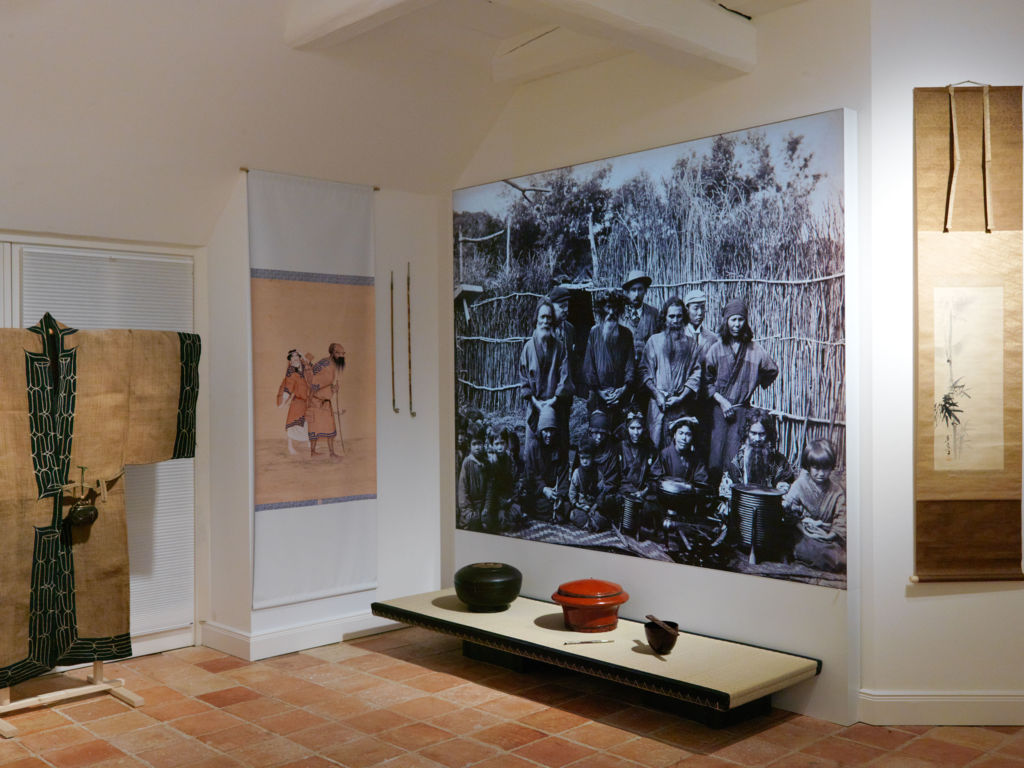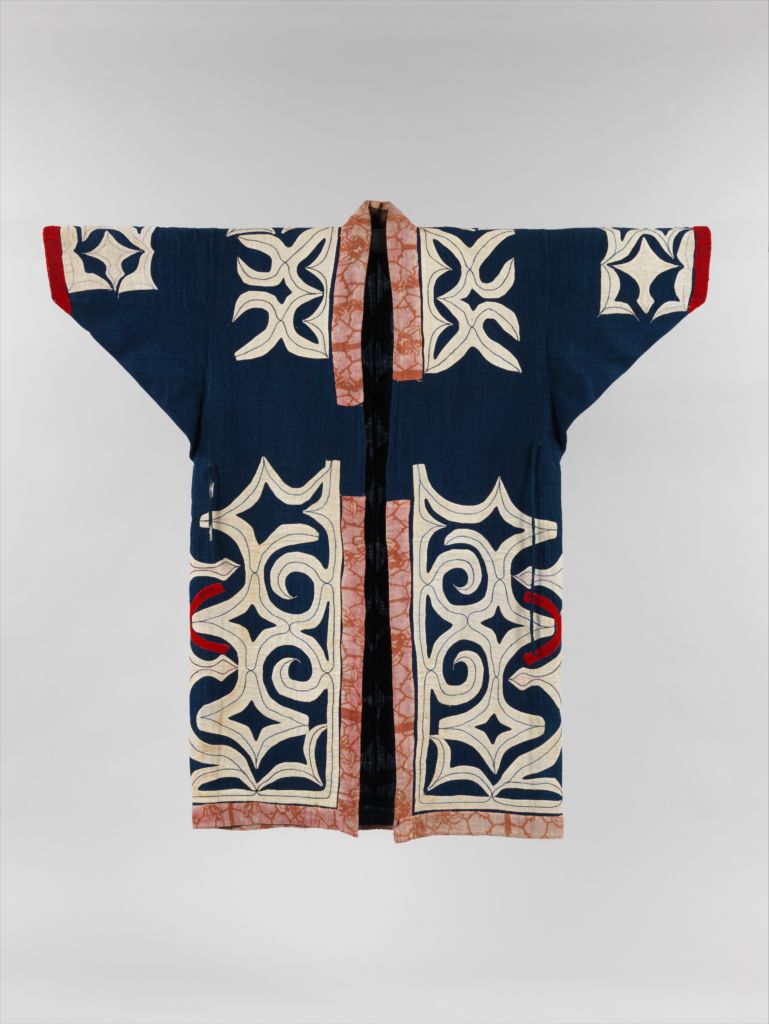Ainu is the generally established name for the indigenous people of northern Japan, especially Hokkaido, which was formerly known as Edo. The Ainu also populate parts of north-eastern Russia, such as Sakhalin and the Kuriles. The Ainu (literally „man“) refer themselves as Ainu or Utari. In the recent past, the Ainu lived and worked mainly as hunters, fishermen and gatherers. Only the southern groups were engaged in subsistence agriculture and animal husbandry. Today between 50,000 and 150,000 people living in Japan, consider themselves Ainu. For centuries there has been a progressive mixing with Japanese, so that the classification is mainly based on self-attribution. Due to the still existing discrimination against the Ainu, however, it can be assumed that their number is significantly higher.
Genetical and anthropological studies suggest that the Ainu are direct descendants of the prehistoric Jomon culture, whose members settled all over Japan from 14,000 to 300 B.C.E. According to historical documents, they were also residents in the northern area of Honshu, e.g. in today’s Aomori Prefecture, until early modern times (Edo period). Place names in the Aomori, Akita and Iwata prefectures show that the Ainu language was once widespread. In the early Middle Ages, the Jomon culture was successively overlaid by the Korean influenced Yamato culture. There is much evidence, both cultural and anthropological, that the northern Japanese emishi people mentioned in ancient Japanese and Chinese sources, who were known in the Middle Ages for their martial skills and were of great importance in the development of the bushi (samurai) state, can be considered the ancestors of today’s Ainu.
Research and finds show that the Ainu are descended from a Paleolithic Siberian population. The oldest archaeological finds that can be related to the Ainu are dated to about 18,000 B.C. The people had – and still have today – a lighter skin colour, an eye cut rather reminiscent of Europeans without the typical East Asian eyelid crease and comparatively strong body hair. Especially known are the long full beards of the men. Also a blue iris is not uncommon among the Ainu; in former times brown or red hair was mentioned more often. Genetic studies have shown a relationship of the Ainu and the prehistoric Jomon with Siberian populations and with the Native Americans of north-eastern USA, especially the Tlingit, Haida and Tsimshian. Elements in cosmology and mythology, house building, art and many other areas also confirm this cultural and anthropological proximity, which goes back many millennia.
//Ainu ist die allgemein etablierte Bezeichnung für die Ureinwohner Nord-Japans, vor allem Hokkaidos, welches früher als Ezo bezeichnet wurde. Die Ainu besiedeln auch Teile Nordost-Russlands, wie Sachalin und die Kurilen. Die Ainu (wörtlich „Mensch“) bezeichnen sich selbst als Ainu oder Utari. Noch in jüngster Vergangenheit lebten und wirtschafteten die Ainu vor allem als Jäger, Fischer und Sammler. Lediglich die südlichen Gruppen betrieben Ackerbau und Tierzucht in Subsistenzwirtschaft. Heute leben zwischen 50.000 und 150.000 Menschen in Japan, die sich selbst als Ainu ansehen. Seit Jahrhunderten findet eine fortschreitende Vermischung mit Japanern statt, so dass die Zuordnung vor allem auf Selbstzuschreibung beruht. Aufgrund der immer noch existierenden Diskriminierung der Ainu ist jedoch anzunehmen, dass ihre Zahl deutlich höher ist.
Genetische und anthropologische Untersuchungen legen nahe, die Ainu als direkte Nachfahren der prähistorischen Jomon-Kultur anzusehen, deren Angehörige von 14.000 bis 300 v.u.Z. ganz Japan besiedelten. Historischen Dokumenten zufolge waren sie bis in die frühe Neuzeit (Edo-Periode) auch im nördlichen Gebiet von Honshu, z.B. in der heutigen Präfektur Aomori, ansässig. Ortsnamen in den Präfekturen von Aomori, Akita und Iwata zeigen, dass die Ainu-Sprache früher dort verbreitet war. Im frühen Mittelalter wurde die Jomon-Kultur sukzessive von der koreanisch geprägten Yamato-Kultur überlagert. Es gibt viele Indizien sowohl kultureller als auch anthropologischer Art, dass das in den alten japanischen und chinesischen Quellen erwähnte nord-japanische Volk der emishi, das im Mittelalter für seine kriegerischen Fähigkeiten bekannt war und für die Entwicklung des bushi-Standes (samurai) von großer Bedeutung war, als Vorfahren der heutigen Ainu angesehen werden kann.
Forschungen und Funde zeigen, dass die Ainu von einer paläolithischen sibirischen Bevölkerung abstammen. Die ältesten archäologischen Funde, die mit den Ainu in Verbindung gebracht werden können, werden auf etwa 18.000 v. u Z. datiert. Die Menschen hatten – und haben heute noch – eine hellere Hautfarbe, einen eher an Europäer erinnernden Augenschnitt ohne die typisch ostasiatische Lidfalte und eine vergleichsweise starke Körperbehaarung. Bekannt sind besonders die langen Vollbärte der Männer. Auch eine blaue Iris ist bei den Ainu nicht ungewöhnlich; früher wurden auch braune oder rote Haare öfter erwähnt. Genetische Untersuchungen haben eine Verwandtschaft der Ainu und der prähistorischen Jomon mit sibirischen Populationen und zu den Ureinwohnern der nord-östlichen USA, vor allem den Tlingit, Haida und Tsimshian, erwiesen. Auch Elemente in Kosmologie und Mythologie, Hausbau, Kunst und vielen anderen Bereichen bestätigen diese kulturelle und anthropologische Nähe, die viele Jahrtausende zurückreicht.

Copyright: Stichting Nationaal Museum van Wereldculturen

Copyright: Stichting Nationaal Museum van Wereldculturen

Copyright: Stichting Nationaal Museum van Wereldculturen

IFICAH Exhibition: The Samurai and the fine arts of Japan

Copyright: The Metropolitan Museum of Art

Hinterlasse einen Kommentar